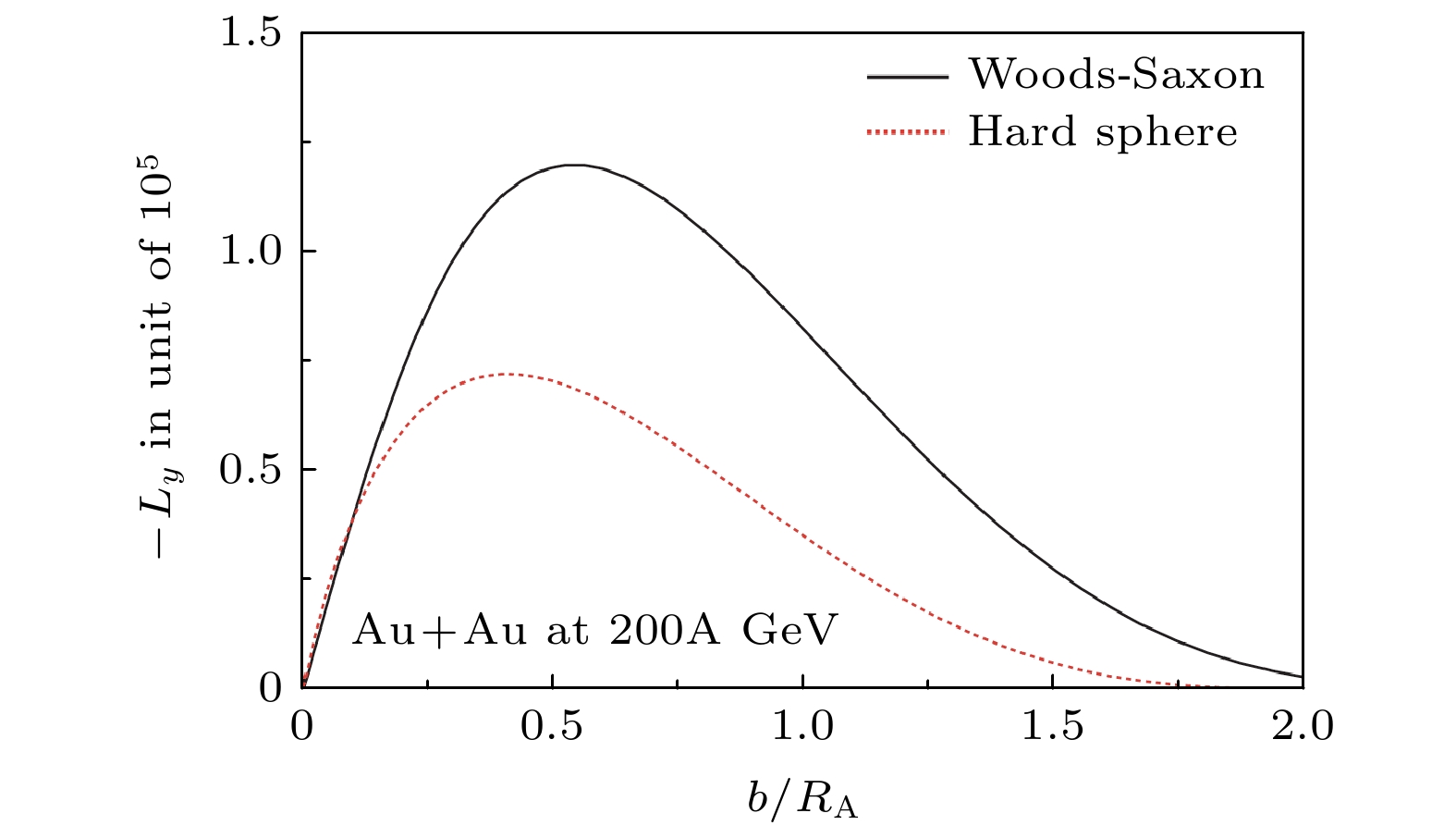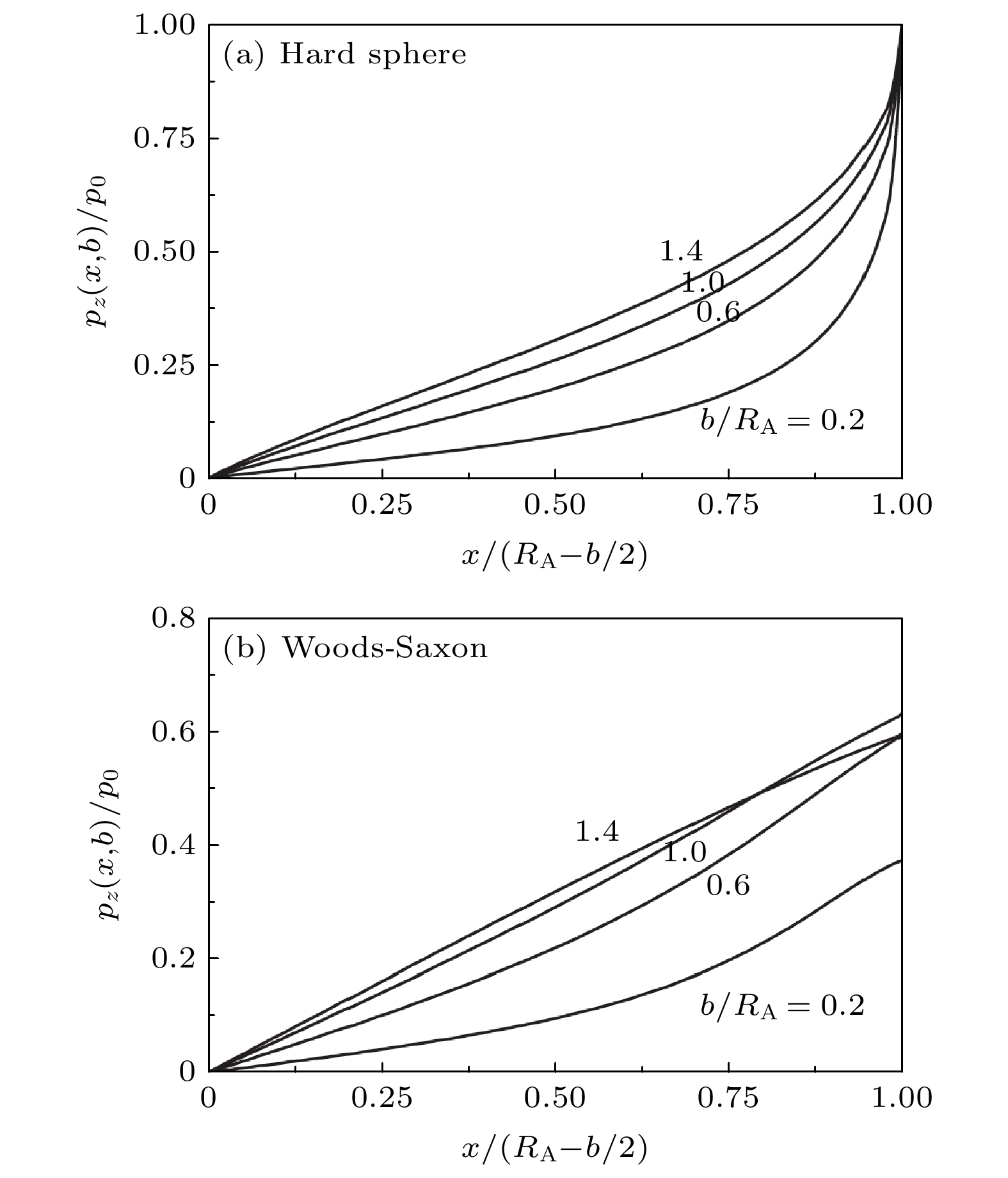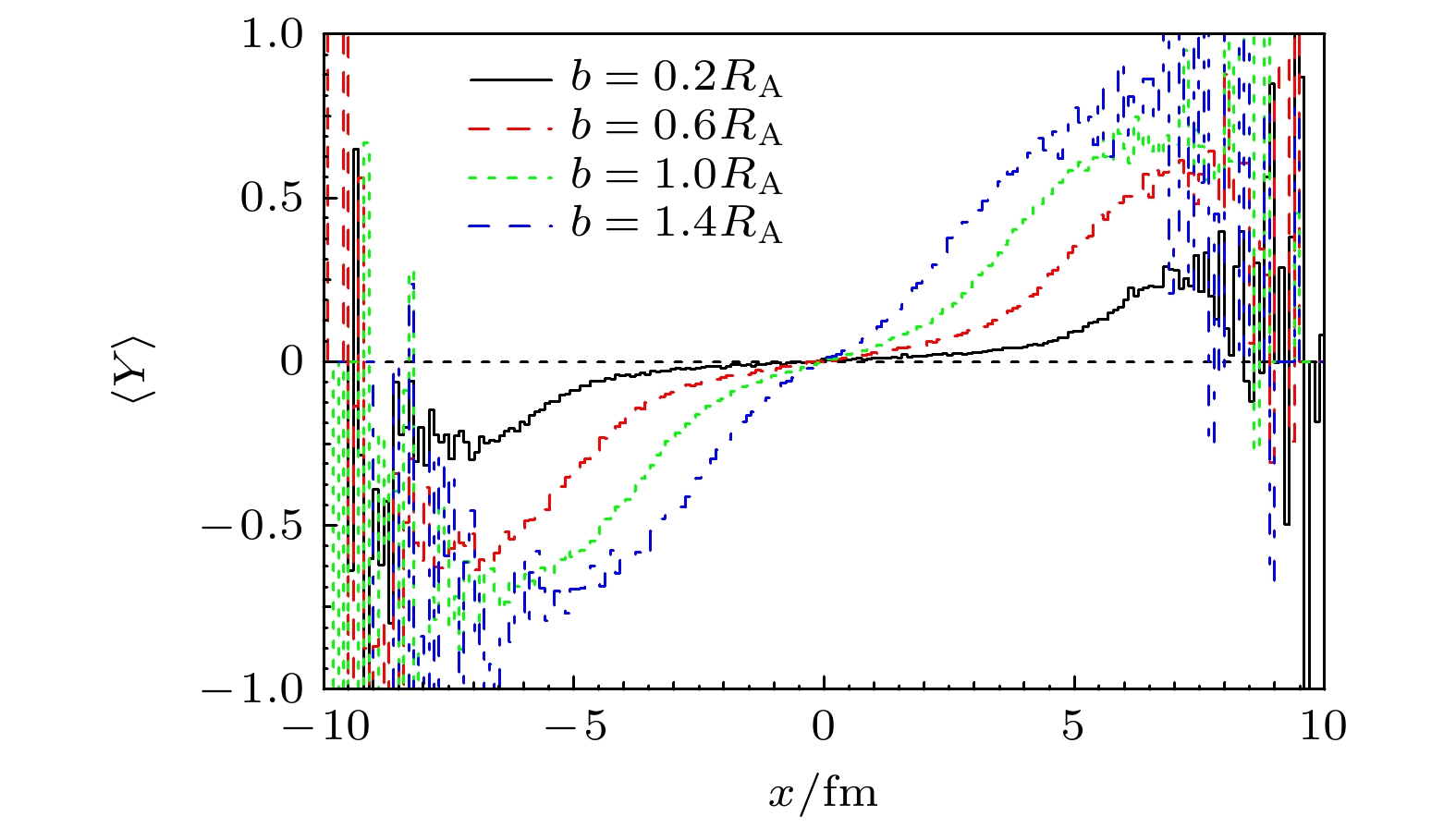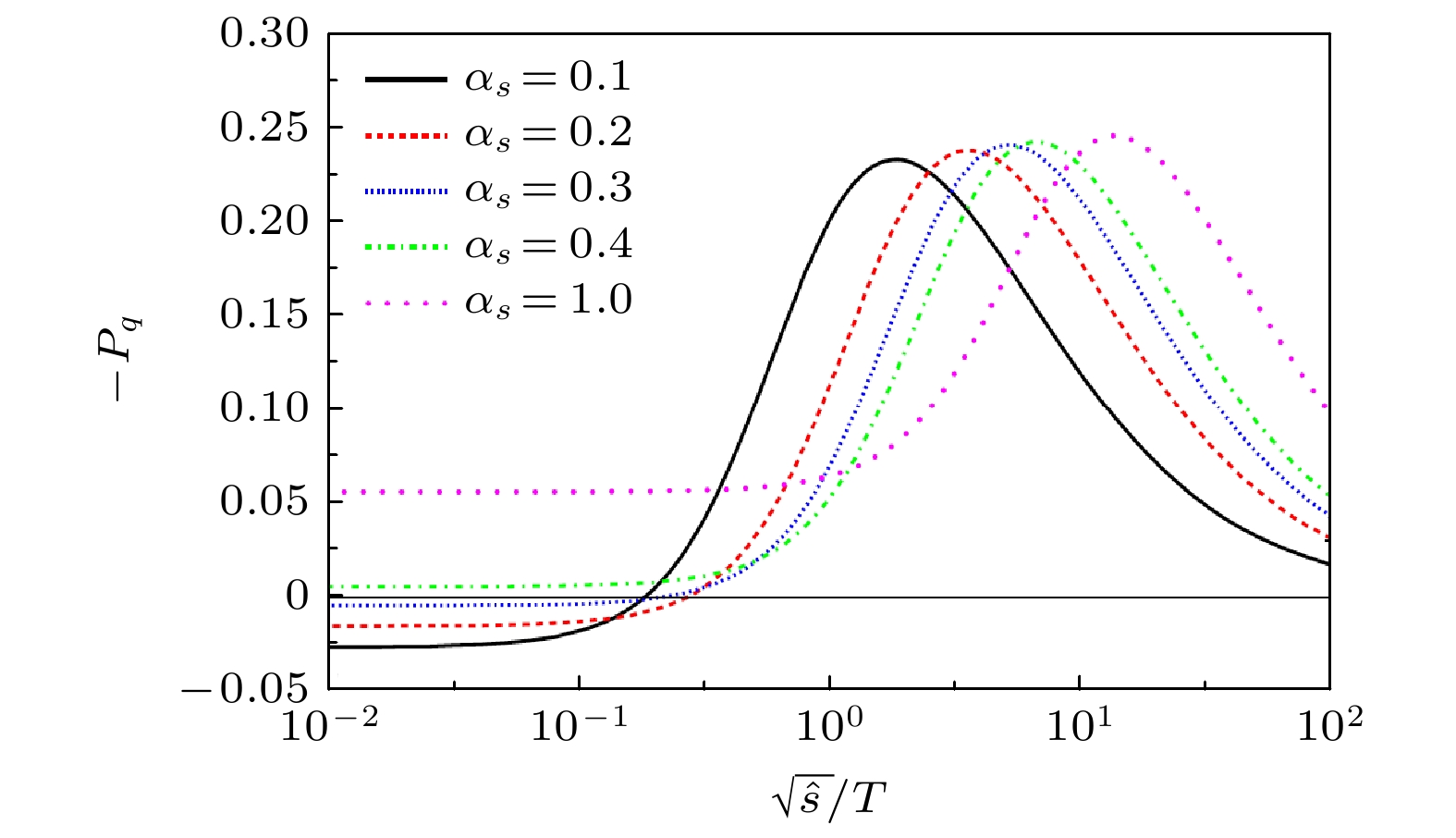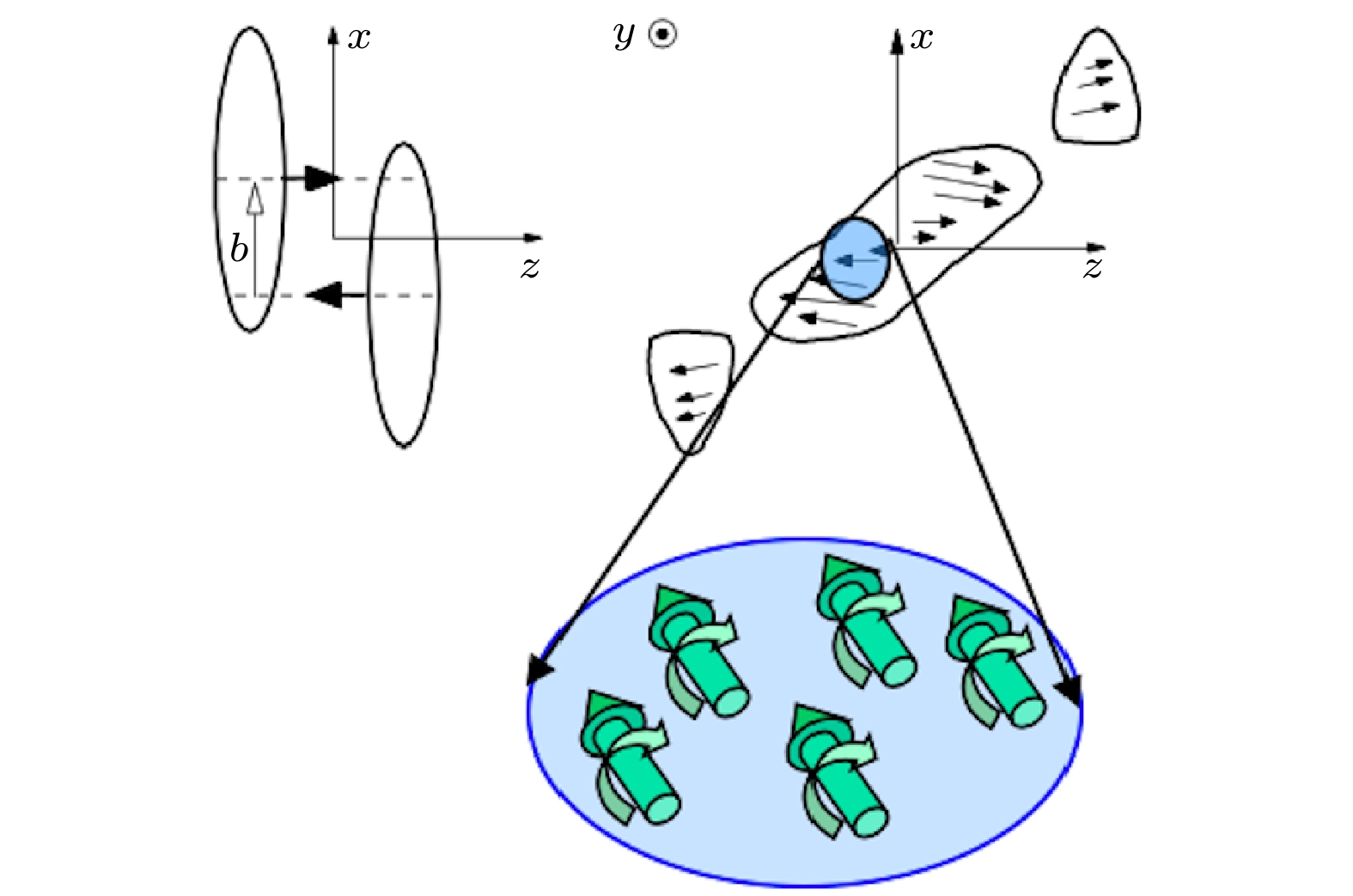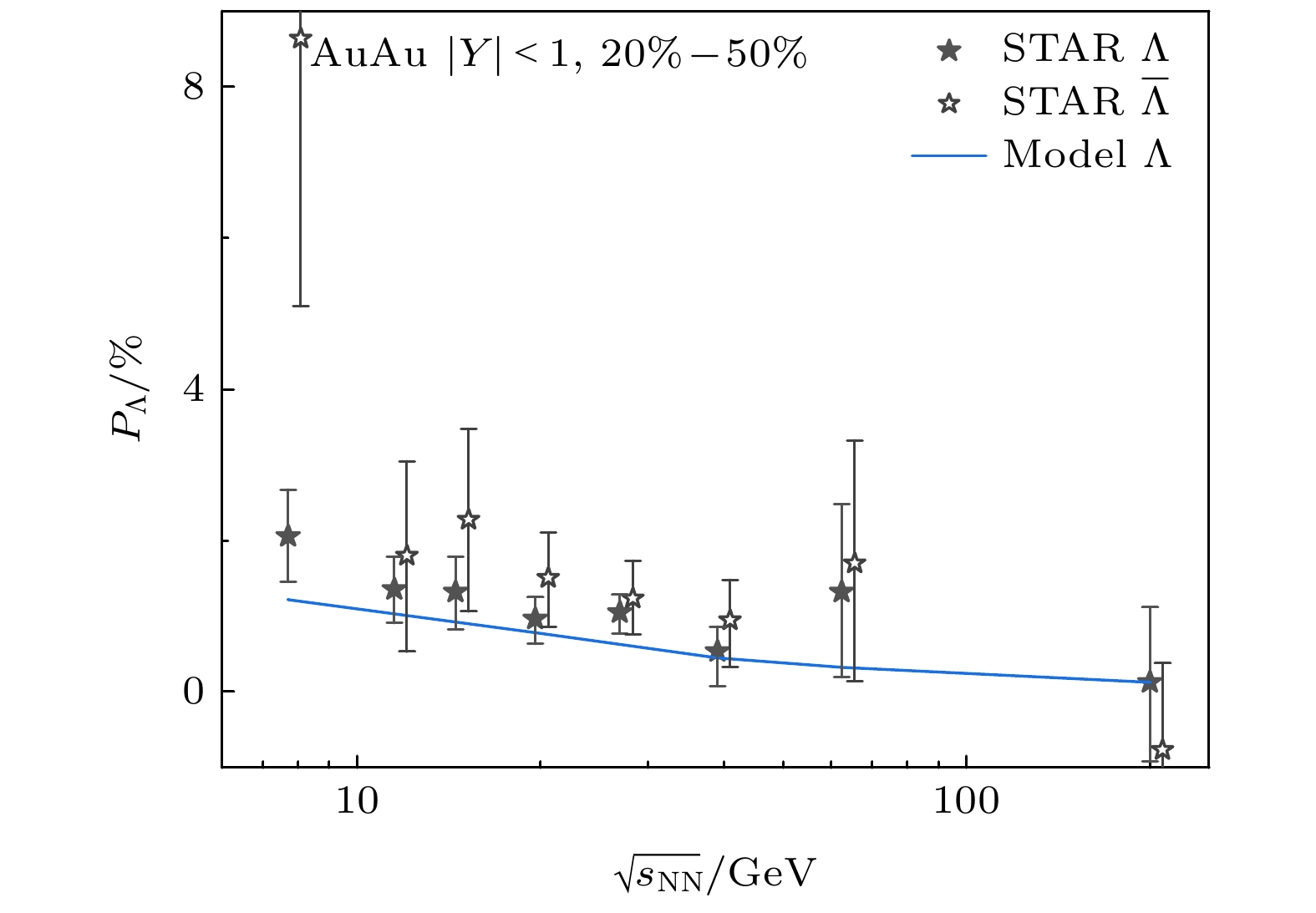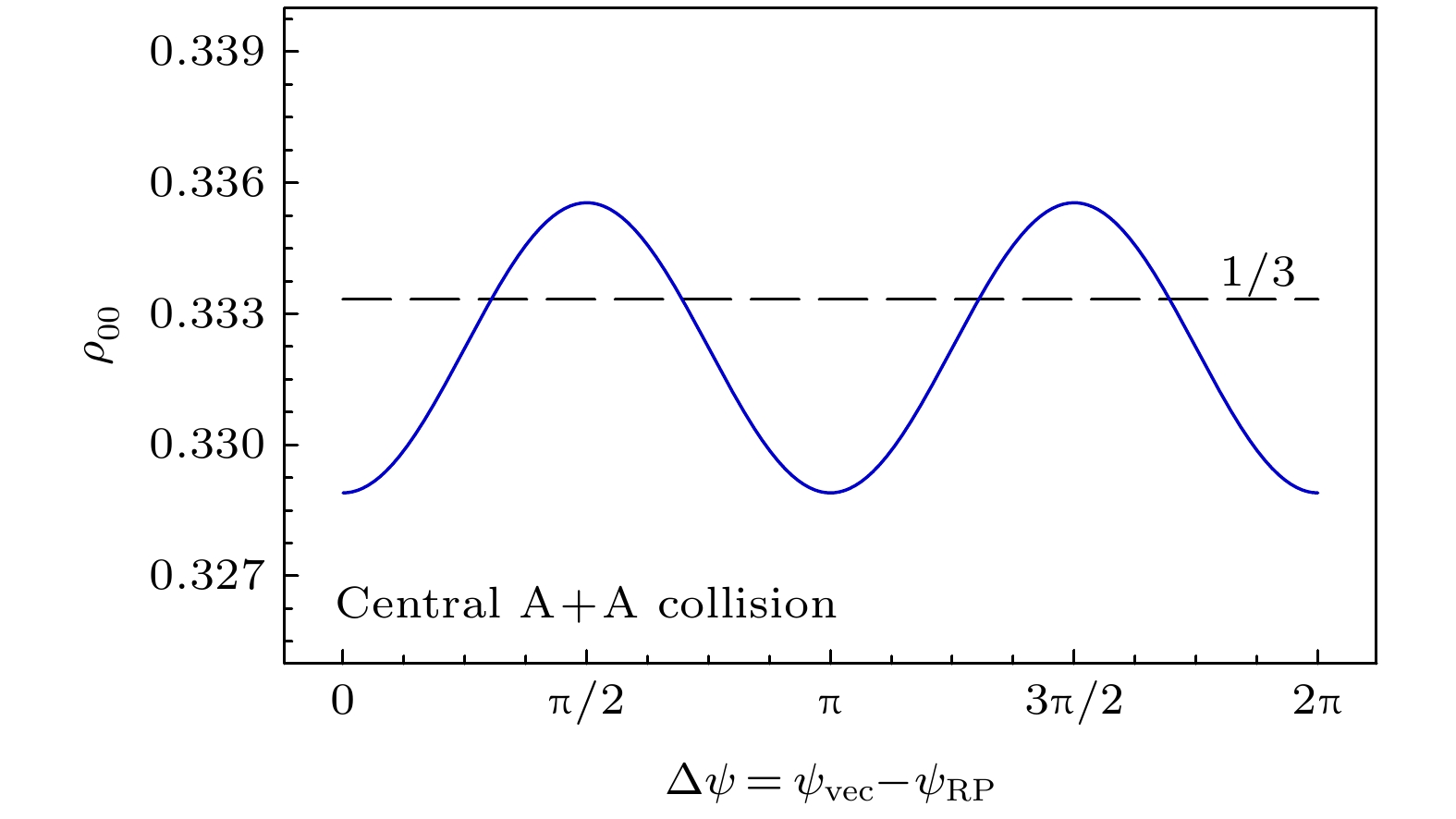-
In non-central relativistic heavy ion collisions, the colliding nuclear system possesses a huge global orbital angular momentum in the direction opposite to the normal of the reaction plane. Due to the spin-orbit coupling in strong interaction, such a huge orbital angular momentum leads to a global spin polarization of the quark matter system produced in the collision process. The global polarization effect in high energy heavy ion collisions was first predicted theoretically and confirmed by STAR experiments at the Relativistic Heavy Ion Collider in Brookhaven National Laboratory. The discovery has attracted much attention to the study of spin effects in heavy ion collision and leads to a new direction in high energy heavy ion physics—Spin Physics in Heavy Ion Collisions. In this paper, we briefly review the original ideas, the calculation methods, the main results and recent theoretical developments in last years. First, we present a short discussion of the spin-orbit coupling which is an intrinsic property for a relativistic fermionic quantum system. Then we review how the global orbital angular momentum can be generated in non-central heavy ion collisions and how the global orbital angular momentum can be transferred to the local orbital angular momentum distribution in two limit model---Landan fireball model and Bjorken scaling model. After that, we review how we can describe the scattering process with initial local orbital angular momentum in the formalism of scattering cross section in impact parameter space and how we calculate the polarization of the quarks and antiquarks in quark gluon plasma produced in non-central heavy ion collisions after single or multiple scattering. We also give a brief review on how the global polarization can be predicted from the formalism of relativistic hydrodynamics with the generalized Cooper-Frye formula with spin. Finally, we discuss how the quark's polarization can be transferred to the final hadron's polarization. We focus on the hyperon's polarization and vector meson's spin alignment produced in heavy-ion collisions.
-
Keywords:
- spin-orbit coupling /
- global polarization /
- spin effects /
- relativistic heavy ion collisions
[1] Adamczyk L, et al. [STAR Collaboration] 2017 Nature 548 62
[2] Liang Z T, Wang X N 2005 Phys. Rev. Lett. 94 102301 [Erratum: 2006 Phys. Rev. Lett. 96 039901]
[3] Abdallah M, et al. [STAR Collaboration] 2023 Nature https://doi.org/10.1038/s41586-022-05557-5, [arXiv: 2204.02302[hep-ph]]
[4] Liang Z T 2007 J. Phys. G 34 S 323
[5] Wang Q 2017 Nucl. Phys. A 967 225
 Google Scholar
Google Scholar
[6] Liang Z T, Lisa M A, Wang X N 2020 Nucl. Phys. News 30 10
 Google Scholar
Google Scholar
[7] Liu Y C, Huang X G 2020 Nucl. Sci. Technol. 31 56
 Google Scholar
Google Scholar
[8] Gao J H, Ma G L, Pu S, Wang Q 2020 Nucl. Sci. Technol. 31 90
 Google Scholar
Google Scholar
[9] Becattini F, Liao J, Lisa M 2021 Lect. Notes Phys. 987
[10] Gao J H, Liang Z T, Wang Q, Wang X N 2021 Lect. Notes Phys. 987 195
[11] 孙旭, 周晨升, 陈金辉, 陈震宇, 马余刚, 唐爱洪, 徐庆华 2023 物理学报 72 072401
Sun X, Zhou C S, Chen J H, Chen Z Y, Ma Y G, Tang A H, Xu Q H 2023 Acta Phys. Sin. 72 072401 (in Chinese)
[12] 盛欣力, 梁作堂, 王群 2023 物理学报 72 072502
Sheng X L, Liang Z T, Wang Q 2023 Acta Phys. Sin. 72 072502 (in Chinese)
[13] Gao J H, Chen S W, Deng W T, Liang Z T, Wang Q, Wang X N 2008 Phys. Rev. C 77 044902
 Google Scholar
Google Scholar
[14] Gao J H 2007 HEPNP 31 1181
[15] Chen S W, Deng J, Gao J H, Wang Q 2009 Front. Phys. China 4 509
 Google Scholar
Google Scholar
[16] Huang X G, Huovinen P, Wang X N 2011 Phys. Rev. C 84 054910
 Google Scholar
Google Scholar
[17] Zhang J J, Fang R H, Wang Q, Wang X N 2019 Phys. Rev. C 100 064904
 Google Scholar
Google Scholar
[18] Betz B, Gyulassy M, Torrieri G 2007 Phys. Rev. C 76 044901
[19] Becattini F, Chandra V, Del Zanna L, Grossi E 2013 Annals Phys. 338 32
 Google Scholar
Google Scholar
[20] 寿齐烨, 赵杰, 徐浩洁, 李威, 王钢, 唐爱洪, 王福强 2023 物理学报 Accepted
Shoy Q Y, Zhao J, Xu H J, Li W, Wang G, Tang A H, Wang F Q 2023 Acta Phys. Sin. Accepted (in Chinese)
[21] 赵新丽, 马国亮, 马余刚 2023 物理学报 Accepted
Zhao X L, Ma G L, Ma Y G 2023 Acta Phys. Sin. Accepted (in Chinese)
[22] Baum G, et al. [SLAC E80] 1980 Phys. Rev. Lett. 45 2000
[23] Baum G, et al. [SLAC E130] 1983 Phys. Rev. Lett. 51 1135
[24] Ashman J, et al. [European Muon Collaboration] 1988 Phys. Lett. B 206 364
[25] Ashman J, et al. [European Muon Collaboration] 1989 Nucl. Phys. B 328 1
[26] Aidala C A, Bass S D, Hasch D, Mallot G K 2013 Rev. Mod. Phys. 85 655
 Google Scholar
Google Scholar
[27] Bjorken J D 1983 Phys. Rev. D 27 140
[28] Levai P, Muller B, Wang X N 1995 Phys. Rev. C 51 3326
 Google Scholar
Google Scholar
[29] Wang X N, Gyulassy M 1991 Phys. Rev. D 44 3501
 Google Scholar
Google Scholar
[30] Wang X N 1997 Phys. Rep. 280 287
 Google Scholar
Google Scholar
[31] Brodsky S J, Gunion J F, Kuhn J H 1977 Phys. Rev. Lett. 39 1120
 Google Scholar
Google Scholar
[32] Liang Z T, Song J, Upsal I, Wang Q, Xu Z B 2021 Chin. Phys. C 45 014102
 Google Scholar
Google Scholar
[33] Gyulassy M, Wang X N 1994 Nucl. Phys. B 420 583
 Google Scholar
Google Scholar
[34] Weldon H A 1982 Phys. Rev. D26 1394
[35] Heiselberg H, Wang X N 1996 Nucl Phys. B462 389
[36] Biro T S, Muller B 1993 Nucl. Phys. A 561 477
 Google Scholar
Google Scholar
[37] Deng W T, Huang X G 2016 Phys. Rev. C 93 064907
 Google Scholar
Google Scholar
[38] Liu Y C, Huang X G 2022 Sci. China Phys. Mech. Astron. 65 272011
 Google Scholar
Google Scholar
[39] Fu B, Xu K, Huang X G, Song H 2021 Phys. Rev. C 103 024903
 Google Scholar
Google Scholar
[40] Liang Z T, Wang X N 2005 Phys. Lett. B 629 20
 Google Scholar
Google Scholar
[41] Xia X L, Li H, Huang X G, Huang H Z 2019 Phys. Rev. C 100 014913
 Google Scholar
Google Scholar
[42] Becattini F, Cao G, Speranza E 2019 Eur. Phys. J. C 79 741
 Google Scholar
Google Scholar
[43] Li H, Xia X L, Huang X G, Huang H Z 2022 Phys. Lett. B 827 136971
 Google Scholar
Google Scholar
[44] Lee T D, Yang C N 1957 Phys. Rev. 108 1645
 Google Scholar
Google Scholar
[45] Gatto R 1958 Phys. Rev. 109 610
 Google Scholar
Google Scholar
[46] Ackerstaff K, et al. [OPAL Collaboration] 1997 Phys. Lett. B 412 210
[47] Abreu P, et al. [DELPHI Collaboration] 1997 Phys. Lett. B 406 271
[48] Xu Q H, Liu C X, Liang Z T 2001 Phys. Rev. D 63 111301
 Google Scholar
Google Scholar
[49] Wei D X, Deng W T, Huang X G 2019 Phys. Rev. C 99 014905
 Google Scholar
Google Scholar
[50] Pang L G, Petersen H, Wang Q Wang X N 2016 Phys. Rev. Lett. 117 192301
 Google Scholar
Google Scholar
[51] Xia X L, Li H, Tang Z B, Wang Q 2018 Phys. Rev. C 98 024905
 Google Scholar
Google Scholar
[52] Xia X L, Li H, Huang X G, Huang H Z 2021 Phys. Lett. B 817 136325
 Google Scholar
Google Scholar
[53] Sheng X L, Oliva L, Liang Z T, Wang Q, Wang X N 2022 arXiv: 2205.15689[nucl-th]
[54] Sheng X L, Oliva L, Liang Z T, Wang Q, Wang X N 2022 arXiv: 2206.05868[hep-ph]
[55] Sheng X L, Oliva L, Wang Q 2020 Phys. Rev. D 101 096005 [Erratum: 2022 Phys. Rev. D 105 099903]
[56] Abelev B I, et al. [STAR] 2007 Phys. Rev. C 76, 024915 [Erratum: 2017 Phys. Rev. C 95, 039906]
[57] Adam J, et al. [STAR] 2018 Phys. Rev. C 98 014910
[58] Adam J, et al. [STAR] 2019 Phys. Rev. Lett. 123 no.13, 132301
[59] Acharya S, et al. [ALICE] 2020 Phys. Rev. C 101 044611 [erratum: 2022 Phys. Rev. C 105, 029902]
[60] Adam J, et al. [STAR] 2021 Phys. Rev. Lett. 126 162301
[61] Liang Z T 2022 arXiv: 2203.09786
[62] Jiang Y, Guo X, Zhuang P 2021 Lect. Notes Phys. 987 167
[63] Gao J H, Liang Z T, Wang Q 2021 Int. J. Mod. Phys. A 36 2130001
 Google Scholar
Google Scholar
[64] Hidaka Y, Pu P, Wang Q, Yang D L 2022 Prog. Part. Nucl. Phys. 127 103989
 Google Scholar
Google Scholar
-
图 10 超子
$\Lambda,\; \Xi^-$ 和$ \Omega^- $ 的整体极化的理论计算结果与实验结果的比较. 左图未考虑强子衰变效应的贡献, 右图考虑了衰变效应的贡献[43]Figure 10. Theoretical calculation and comparison with experimental result for
$ \Lambda, \;\Xi^- $ and$ \Omega^- $ . The feed-down effect is taken into account in the left panel while not in the right panel[43]表 1 超子极化在夸克组合模型和碎裂模型的结果比较。在碎裂模型计算中参数
$ n_s $ 和$ f_s $ 分别表示夸克-胶子等离子体中和夸克碎裂过程产生的奇异夸克相对于上下夸克的丰度[2]Table 1. Hyperon’s polarizaiton from quark combination or fragmentation mechanism. In the fragmentation calculation,
$ n_s $ and$ f_s $ denote the strange quark abundances relative to up or down quarks in QGP and quark fragmentation, respectively[2]超子 $ \Lambda $ $ \Sigma^+ $ $ \Sigma^0 $ $ \Sigma^- $ $ \Xi^0 $ $ \Xi^- $ 组合 $ P_s $ $ \dfrac{4 P_u-P_s}{3} $ $ \dfrac{2(P_u+P_d)-P_s}{3} $ $ \dfrac{4 P_d-P_s}{3} $ $ \dfrac{4 P_s-P_u}{3} $ $ \dfrac{4 P_s-P_d}{3} $ 碎裂 $ \dfrac{n_sP_s}{n_s+2 f_s} $ $ \dfrac{4 f_sP_u-n_sP_s}{3(2 f_s+n_s)} $ $ \dfrac{2 f_s(P_u+P_d)-n_sP_s}{3(2 f_s+n_s)} $ $ \dfrac{4 f_sP_d-n_sP_s}{3(2 f_s+n_s)} $ $ \dfrac{4 n_sP_s-f_sP_u}{3(2 n_s+f_s)} $ $ \dfrac{4 n_sP_s-f_sP_d}{3(2 n_s+f_s)} $ -
[1] Adamczyk L, et al. [STAR Collaboration] 2017 Nature 548 62
[2] Liang Z T, Wang X N 2005 Phys. Rev. Lett. 94 102301 [Erratum: 2006 Phys. Rev. Lett. 96 039901]
[3] Abdallah M, et al. [STAR Collaboration] 2023 Nature https://doi.org/10.1038/s41586-022-05557-5, [arXiv: 2204.02302[hep-ph]]
[4] Liang Z T 2007 J. Phys. G 34 S 323
[5] Wang Q 2017 Nucl. Phys. A 967 225
 Google Scholar
Google Scholar
[6] Liang Z T, Lisa M A, Wang X N 2020 Nucl. Phys. News 30 10
 Google Scholar
Google Scholar
[7] Liu Y C, Huang X G 2020 Nucl. Sci. Technol. 31 56
 Google Scholar
Google Scholar
[8] Gao J H, Ma G L, Pu S, Wang Q 2020 Nucl. Sci. Technol. 31 90
 Google Scholar
Google Scholar
[9] Becattini F, Liao J, Lisa M 2021 Lect. Notes Phys. 987
[10] Gao J H, Liang Z T, Wang Q, Wang X N 2021 Lect. Notes Phys. 987 195
[11] 孙旭, 周晨升, 陈金辉, 陈震宇, 马余刚, 唐爱洪, 徐庆华 2023 物理学报 72 072401
Sun X, Zhou C S, Chen J H, Chen Z Y, Ma Y G, Tang A H, Xu Q H 2023 Acta Phys. Sin. 72 072401 (in Chinese)
[12] 盛欣力, 梁作堂, 王群 2023 物理学报 72 072502
Sheng X L, Liang Z T, Wang Q 2023 Acta Phys. Sin. 72 072502 (in Chinese)
[13] Gao J H, Chen S W, Deng W T, Liang Z T, Wang Q, Wang X N 2008 Phys. Rev. C 77 044902
 Google Scholar
Google Scholar
[14] Gao J H 2007 HEPNP 31 1181
[15] Chen S W, Deng J, Gao J H, Wang Q 2009 Front. Phys. China 4 509
 Google Scholar
Google Scholar
[16] Huang X G, Huovinen P, Wang X N 2011 Phys. Rev. C 84 054910
 Google Scholar
Google Scholar
[17] Zhang J J, Fang R H, Wang Q, Wang X N 2019 Phys. Rev. C 100 064904
 Google Scholar
Google Scholar
[18] Betz B, Gyulassy M, Torrieri G 2007 Phys. Rev. C 76 044901
[19] Becattini F, Chandra V, Del Zanna L, Grossi E 2013 Annals Phys. 338 32
 Google Scholar
Google Scholar
[20] 寿齐烨, 赵杰, 徐浩洁, 李威, 王钢, 唐爱洪, 王福强 2023 物理学报 Accepted
Shoy Q Y, Zhao J, Xu H J, Li W, Wang G, Tang A H, Wang F Q 2023 Acta Phys. Sin. Accepted (in Chinese)
[21] 赵新丽, 马国亮, 马余刚 2023 物理学报 Accepted
Zhao X L, Ma G L, Ma Y G 2023 Acta Phys. Sin. Accepted (in Chinese)
[22] Baum G, et al. [SLAC E80] 1980 Phys. Rev. Lett. 45 2000
[23] Baum G, et al. [SLAC E130] 1983 Phys. Rev. Lett. 51 1135
[24] Ashman J, et al. [European Muon Collaboration] 1988 Phys. Lett. B 206 364
[25] Ashman J, et al. [European Muon Collaboration] 1989 Nucl. Phys. B 328 1
[26] Aidala C A, Bass S D, Hasch D, Mallot G K 2013 Rev. Mod. Phys. 85 655
 Google Scholar
Google Scholar
[27] Bjorken J D 1983 Phys. Rev. D 27 140
[28] Levai P, Muller B, Wang X N 1995 Phys. Rev. C 51 3326
 Google Scholar
Google Scholar
[29] Wang X N, Gyulassy M 1991 Phys. Rev. D 44 3501
 Google Scholar
Google Scholar
[30] Wang X N 1997 Phys. Rep. 280 287
 Google Scholar
Google Scholar
[31] Brodsky S J, Gunion J F, Kuhn J H 1977 Phys. Rev. Lett. 39 1120
 Google Scholar
Google Scholar
[32] Liang Z T, Song J, Upsal I, Wang Q, Xu Z B 2021 Chin. Phys. C 45 014102
 Google Scholar
Google Scholar
[33] Gyulassy M, Wang X N 1994 Nucl. Phys. B 420 583
 Google Scholar
Google Scholar
[34] Weldon H A 1982 Phys. Rev. D26 1394
[35] Heiselberg H, Wang X N 1996 Nucl Phys. B462 389
[36] Biro T S, Muller B 1993 Nucl. Phys. A 561 477
 Google Scholar
Google Scholar
[37] Deng W T, Huang X G 2016 Phys. Rev. C 93 064907
 Google Scholar
Google Scholar
[38] Liu Y C, Huang X G 2022 Sci. China Phys. Mech. Astron. 65 272011
 Google Scholar
Google Scholar
[39] Fu B, Xu K, Huang X G, Song H 2021 Phys. Rev. C 103 024903
 Google Scholar
Google Scholar
[40] Liang Z T, Wang X N 2005 Phys. Lett. B 629 20
 Google Scholar
Google Scholar
[41] Xia X L, Li H, Huang X G, Huang H Z 2019 Phys. Rev. C 100 014913
 Google Scholar
Google Scholar
[42] Becattini F, Cao G, Speranza E 2019 Eur. Phys. J. C 79 741
 Google Scholar
Google Scholar
[43] Li H, Xia X L, Huang X G, Huang H Z 2022 Phys. Lett. B 827 136971
 Google Scholar
Google Scholar
[44] Lee T D, Yang C N 1957 Phys. Rev. 108 1645
 Google Scholar
Google Scholar
[45] Gatto R 1958 Phys. Rev. 109 610
 Google Scholar
Google Scholar
[46] Ackerstaff K, et al. [OPAL Collaboration] 1997 Phys. Lett. B 412 210
[47] Abreu P, et al. [DELPHI Collaboration] 1997 Phys. Lett. B 406 271
[48] Xu Q H, Liu C X, Liang Z T 2001 Phys. Rev. D 63 111301
 Google Scholar
Google Scholar
[49] Wei D X, Deng W T, Huang X G 2019 Phys. Rev. C 99 014905
 Google Scholar
Google Scholar
[50] Pang L G, Petersen H, Wang Q Wang X N 2016 Phys. Rev. Lett. 117 192301
 Google Scholar
Google Scholar
[51] Xia X L, Li H, Tang Z B, Wang Q 2018 Phys. Rev. C 98 024905
 Google Scholar
Google Scholar
[52] Xia X L, Li H, Huang X G, Huang H Z 2021 Phys. Lett. B 817 136325
 Google Scholar
Google Scholar
[53] Sheng X L, Oliva L, Liang Z T, Wang Q, Wang X N 2022 arXiv: 2205.15689[nucl-th]
[54] Sheng X L, Oliva L, Liang Z T, Wang Q, Wang X N 2022 arXiv: 2206.05868[hep-ph]
[55] Sheng X L, Oliva L, Wang Q 2020 Phys. Rev. D 101 096005 [Erratum: 2022 Phys. Rev. D 105 099903]
[56] Abelev B I, et al. [STAR] 2007 Phys. Rev. C 76, 024915 [Erratum: 2017 Phys. Rev. C 95, 039906]
[57] Adam J, et al. [STAR] 2018 Phys. Rev. C 98 014910
[58] Adam J, et al. [STAR] 2019 Phys. Rev. Lett. 123 no.13, 132301
[59] Acharya S, et al. [ALICE] 2020 Phys. Rev. C 101 044611 [erratum: 2022 Phys. Rev. C 105, 029902]
[60] Adam J, et al. [STAR] 2021 Phys. Rev. Lett. 126 162301
[61] Liang Z T 2022 arXiv: 2203.09786
[62] Jiang Y, Guo X, Zhuang P 2021 Lect. Notes Phys. 987 167
[63] Gao J H, Liang Z T, Wang Q 2021 Int. J. Mod. Phys. A 36 2130001
 Google Scholar
Google Scholar
[64] Hidaka Y, Pu P, Wang Q, Yang D L 2022 Prog. Part. Nucl. Phys. 127 103989
 Google Scholar
Google Scholar
Catalog
Metrics
- Abstract views: 3587
- PDF Downloads: 121
- Cited By: 0














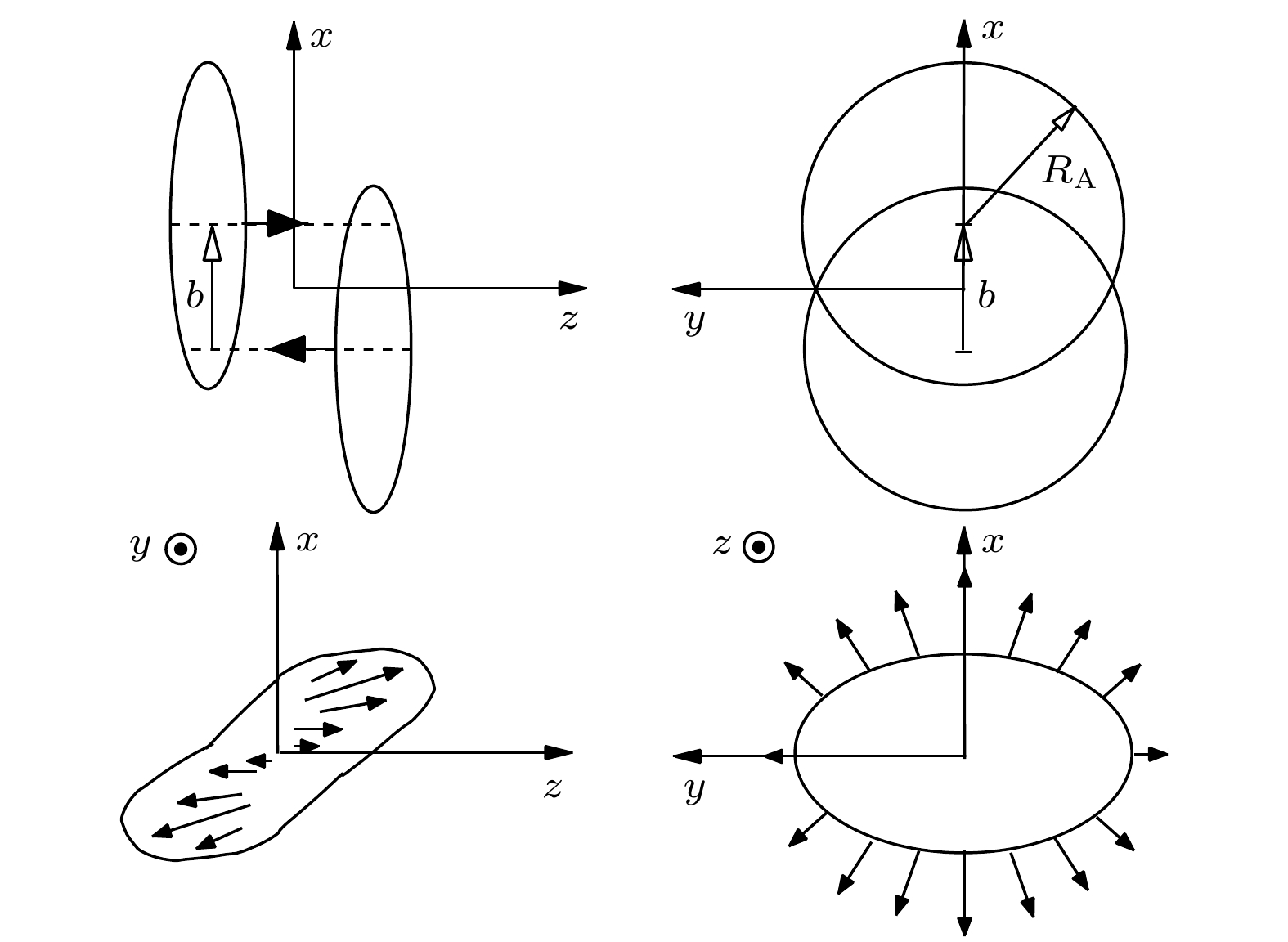
 DownLoad:
DownLoad:
